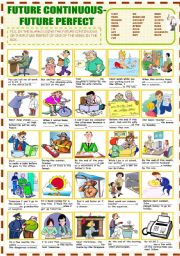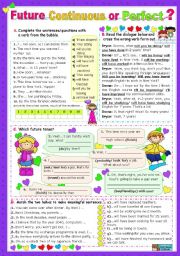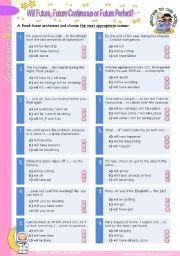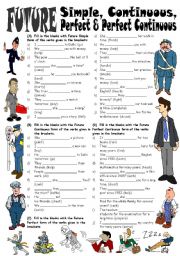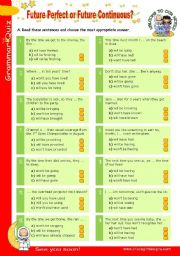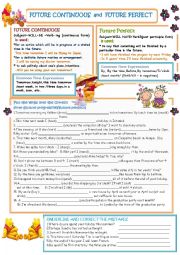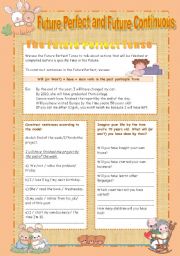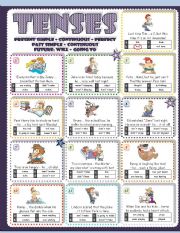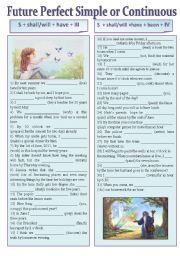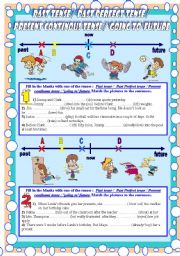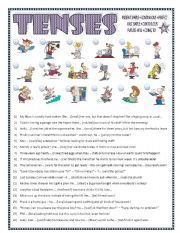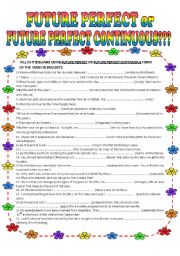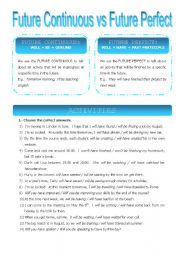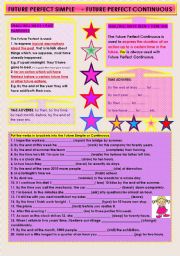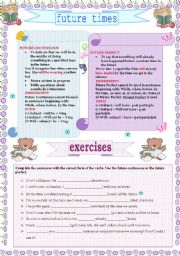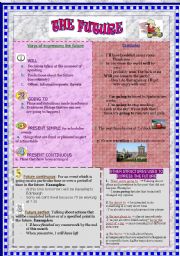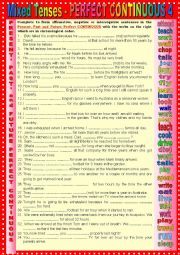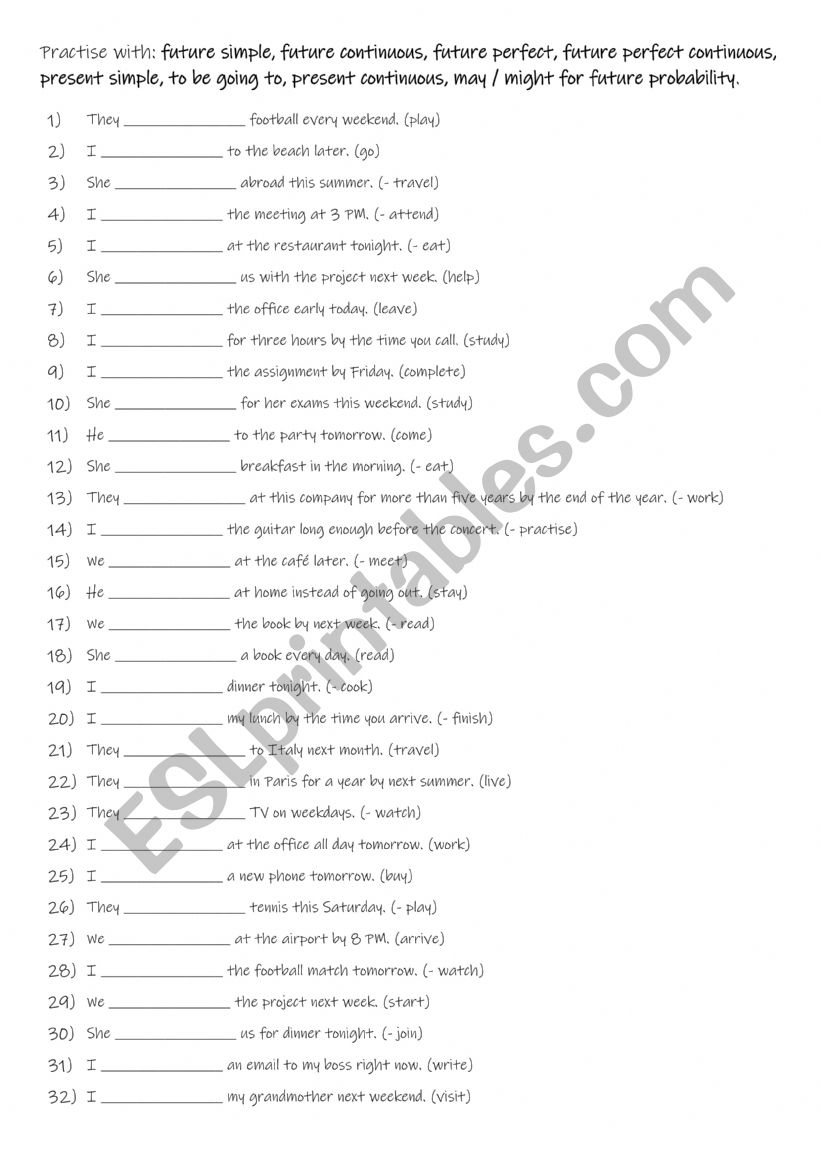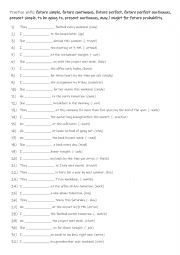
|
B1-B2 Practise with future simple, future continuous, future perfect, future perfect continuous, present simple, to be going to, present continuous, may / might for future probability.
Learning these future tenses and structures (future simple, future continuous, future perfect, future perfect continuous, present simple, to be going to, present continuous, may, and might for future probability) is crucial for students because they help express different types of future actions and possibilities. For example, the future simple is used for simple predictions or decisions (e.g., I will call you later), while the future continuous describes actions that will be happening at a specific future time (e.g., I will be studying at 8 PM). The future perfect and future perfect continuous show completed actions or ongoing actions in the future (e.g., I will have finished my homework by tomorrow). Using may and might helps talk about uncertainty or possibility (e.g., It might rain tomorrow), while the present continuous and to be going to express planned actions or near future events. Mastering these forms enables students to communicate a wide range of future situations and probabilities with accuracy. First, students need to familiarise themselves with the future tenses and check their meaning and use. Then they read the sentences to see which one is needed to complete the sentence. Answers on page 2.
Level:intermediate
Age: +8
Downloads:110 |
|
Copyright 19/11/2024 Anthoni
Publication or redistribution of any part of this
document is forbidden without authorization of the
copyright owner.
|


see more worksheets by Anthoni
|

